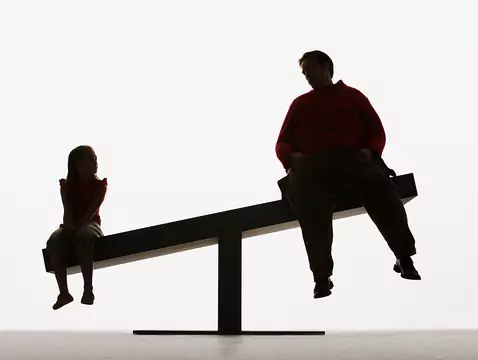In most cases, the condition appears between the ages of one and five. However, strabismus can also affect older children - they are at risk of developing it until the age of eight, that is, until the ability to see properly with both eyes is fully developed. A strabismus can also be congenital - present right after birth or appearing soon afterwards. It is worth remembering, however, that it does not necessarily indicate an actual condition.
Consequences of strabismus
When the two eyeballs are aligned in parallel, the image seen falls on the correct part of the retina in both eyes. This information reaches the brain via the visual pathway, which combines the messages from both eyes into a three-dimensional image. When each eye looks in a different direction, two different images are formed on the retina, and additionally, the one formed outside the macula is blurred. The child's brain then receives conflicting information and, in order to cope with this situation, shuts down the transmission of the image from one eye. The result is amblyopia, commonly referred to as 'lazy eye' syndrome and visual impairment. The consequence of such a situation is a reduction in the ability to see, or even its permanent and irreversible loss, which is why it is so important to undertake prompt treatment, emphasises Alicja Dreksler-Tkacz.
Treatment of strabismus
Strabismus can be treated conservatively. If it is caused by a refractive error, wearing corrective glasses may be sufficient. Often the child is reluctant to wear them, but it is worth remembering that this may be due not only to external factors (inconvenience, the need to remember to put them on every day), but also to the need to adapt the eyes to looking through glasses that support the vision. This is because children can train their eyes to cope with their defect in such a way that it is difficult for them to change the habit and 'give up' some of this work to glasses. Usually, treatment also requires the child to perform special exercises to increase the ability of the two eyeballs to work together in a coordinated manner suggested by the orthoptist. Ongoing research by American scientists in this field not only shows the high effectiveness of this form of treatment, but allows new and improved programmes of work to be created with patients who suffer from strabismic disease.

When amblyopia occurs, a third treatment method should be introduced to strengthen the muscles of the weakened eye and restore normal vision. A simple solution is then used in the form of covering up the healthy eye and forcing the one with reduced visual acuity to work harder. A number of cases sometimes require surgical intervention. Surgery is performed when the disease is very advanced and can no longer be cured with corrective spectacles. However, it is worth remembering that it will not remove the amblyopia. The procedure is carried out under general anaesthesia and serves to align the normal muscle function in both eyeballs. Wearing glasses after the procedure is also necessary in this case - they are used to restore the improved function of the eyes as a single organ.









